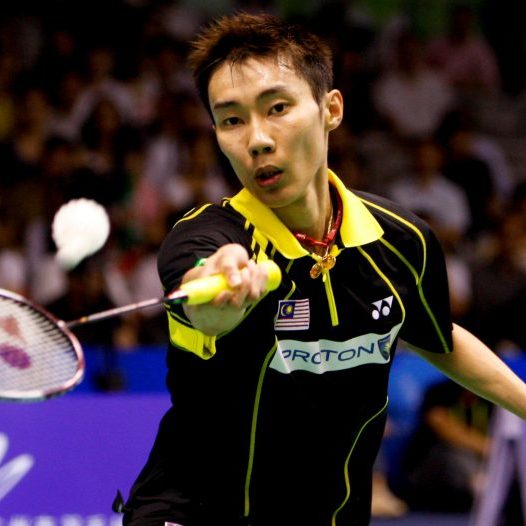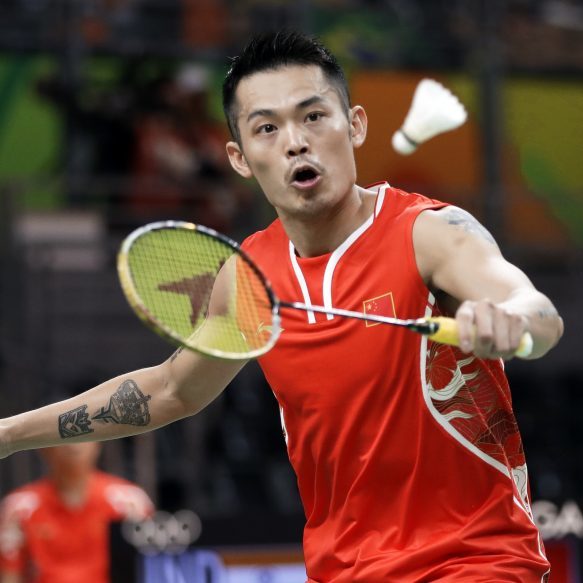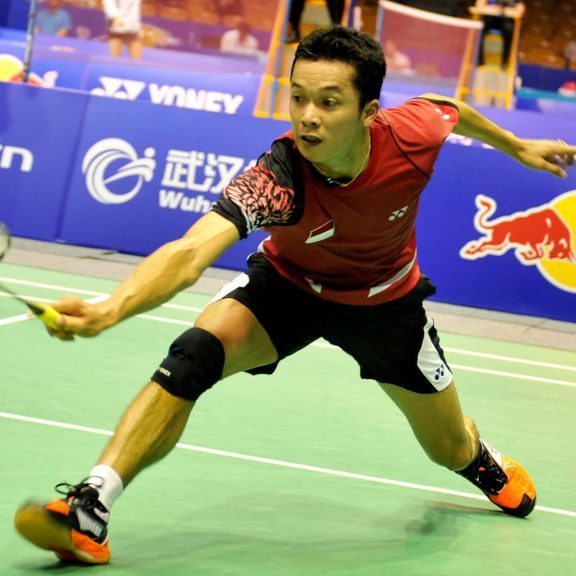Badminton is a racquet sport played using racquets to hit a shuttlecock across a net. Although it may be played with larger teams, the most common forms of the game are “singles” (with one player per side) and “doubles” (with two players per side). Badminton is often played as a casual outdoor activity in a yard or on a beach; formal games are played on a rectangular indoor court. Points are scored by striking the shuttlecock with the racquet and landing it within the opposing side’s half of the court.
Badminton
History
Games employing shuttlecocks have been played for centuries across Eurasia but the modern game of badminton developed in the mid-19th century among the British as a variant of the earlier game of battledore and shuttlecock. (“Battledore” was an older term for “racquet”.) Its exact origin remains obscure. The name derives from the Duke of Beaufort‘s Badminton House in Gloucestershire. but why or when remains unclear. As early as 1860, a London toy dealer named Isaac Spratt published a booklet entitled Badminton Battledore – A New Game, but no copy is known to have survived. An 1863 article in The Cornhill Magazine describes badminton as “battledore and shuttlecock played with sides, across a string suspended some five feet from the ground”.
The game may have originally developed among expatriate officers in British India, where it was very popular by the 1870s. Ball badminton, a form of the game played with a wool ball instead of a shuttlecock, was being played in Thanjavur as early as the 1850s and was at first played interchangeably with badminton by the British, the woollen ball being preferred in windy or wet weathe.
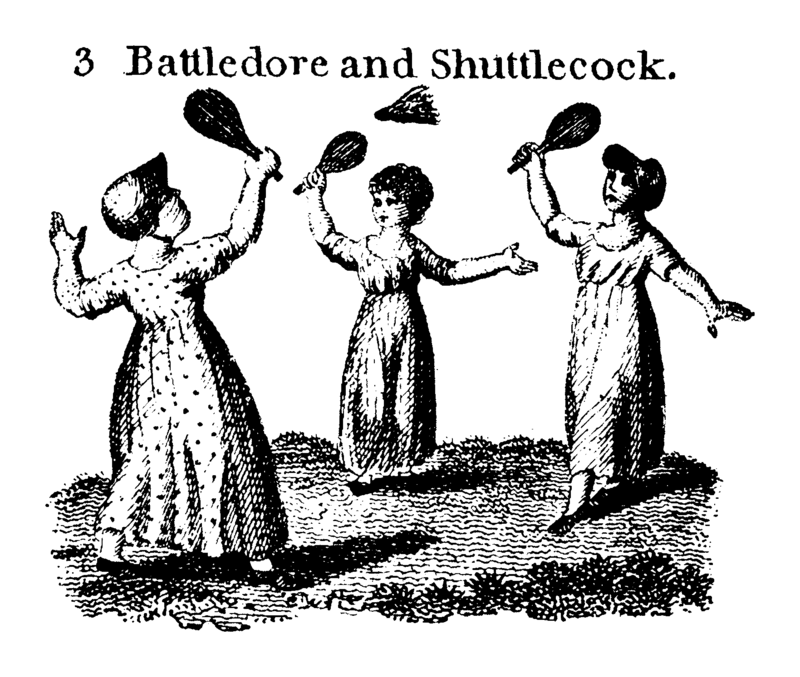
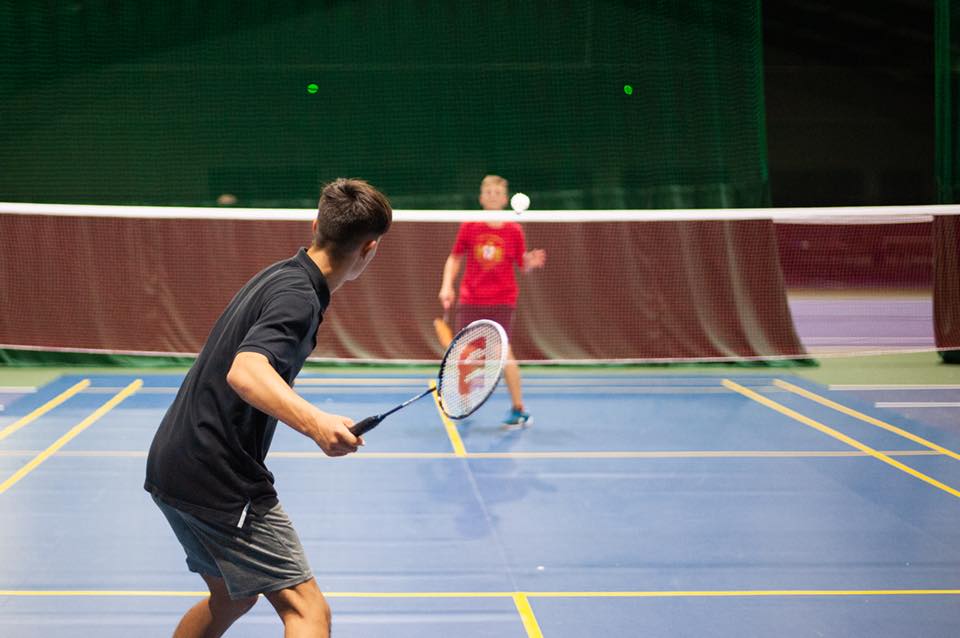
Rules
Court
The court is rectangular and divided into halves by a net. Courts are usually marked for both singles and doubles play, although badminton rules permit a court to be marked for singles only. The doubles court is wider than the singles court, but both are of the same length. The exception, which often causes confusion to newer players, is that the doubles court has a shorter serve-length dimension.
The full width of the court is 6.1 meters (20 ft), and in singles, this width is reduced to 5.18 meters (17 ft). The full length of the court is 13.4 meters (44 ft). The service courts are marked by a center line dividing the width of the court, by a short service line at a distance of 1.98 meters (6 ft 6 inch) from the net, and by the outer side and back boundaries. In doubles, the service court is also marked by a long service line, which is 0.76 meters (2 ft 6 inch) from the back boundary.
The net is 1.55 metres (5 ft 1 inch) high at the edges and 1.524 metres (5 ft) high in the center. The net posts are placed over the doubles sidelines, even when singles is played.
The minimum height for the ceiling above the court is not mentioned in the Laws of Badminton. Nonetheless, a badminton court will not be suitable if the ceiling is likely to be hit on a high serve.
Serving
When the server serves, the shuttlecock must pass over the short service line on the opponents’ court or it will count as a fault.
At the start of the rally, the server and receiver stand in diagonally opposite service courts (see court dimensions). The server hits the shuttlecock so that it would land in the receiver’s service court. This is similar to tennis, except that a badminton serve must be hit below waist height and with the racquet shaft pointing downwards, the shuttlecock is not allowed to bounce and in badminton, the players stand inside their service courts, unlike tennis.
When the serving side loses a rally, the server immediately passes to their opponent(s) (this differs from the old system where sometimes the serve passes to the doubles partner for what is known as a “second serve”).
In singles, the server stands in their right service court when their score is even, and in her/his left service court when her/his score is odd.
In doubles, if the serving side wins a rally, the same player continues to serve, but he/she changes service courts so that she/he serves to a different opponent each time. If the opponents win the rally and their new score is even, the player in the right service court serves; if odd, the player in the left service court serves. The players’ service courts are determined by their positions at the start of the previous rally, not by where they were standing at the end of the rally. A consequence of this system is that each time a side regains the service, the server will be the player who did not serve last time.
Scoring
Each game is played to 21 points, with players scoring a point whenever they win a rally regardless of whether they served (this differs from the old system where players could only win a point on their serve and each game was played to 15 points). A match is the best of three games.
If the score reaches 20-all, then the game continues until one side gains a two-point lead (such as 24–22), except when there is a tie at 29-all, in which the game goes to a golden point. Whoever scores this point will win.
At the start of a match, the shuttlecock is cast and the side towards which the shuttlecock is pointing serves first. Alternatively, a coin may be tossed, with the winners choosing whether to serve or receive first, or choosing which end of the court to occupy first, and their opponents making the leftover the remaining choice.
In subsequent games, the winners of the previous game serve first. Matches are best out of three: a player or pair must win two games (of 21 points each) to win the match. For the first rally of any doubles game, the serving pair may decide who serves and the receiving pair may decide who receives. The players change ends at the start of the second game; if the match reaches a third game, they change ends both at the start of the game and when the leading player’s or pair’s score reaches 11 points.
The server and receiver must remain within their service courts, without touching the boundary lines, until the server strikes the shuttlecock. The other two players may stand wherever they wish, so long as they do not block the vision of the server or receiver.
Lets
If a let is called, the rally is stopped and replayed with no change to the score. Lets may occur because of some unexpected disturbance such as a shuttlecock landing on a court (having been hit there by players playing in adjacent court) or in small halls the shuttle may touch an overhead rail which can be classed as a let.
If the receiver is not ready when the service is delivered, a let shall be called; yet, if the receiver attempts to return the shuttlecock, the receiver shall be judged to have been ready.
Equipments
Racquets
Badminton racquets are lightweight, with top quality racquets weighing between 70 and 95 grams (2.5 and 3.4 ounces) not including grip or strings. They are composed of many different materials ranging from carbon fiber composite (graphite reinforced plastic) to solid steel, which may be augmented by a variety of materials. Carbon fiber has an excellent strength to weight ratio, is stiff, and gives excellent kinetic energy transfer. Before the adoption of carbon fiber composite, racquets were made of light metals such as aluminum Earlier still, racquets were made of wood. Cheap racquets are still often made of metals such as steel, but wooden racquets are no longer manufactured for the ordinary market, because of their excessive mass and cost. Nowadays, nanomaterials such as carbon nanotubes and fullerene are added to racquets giving them greater durability.
There is a wide variety of racquet designs, although the laws limit the racquet size and shape. Different racquets have playing characteristics that appeal to different players. The traditional oval head shape is still available, but an isometric head shape is increasingly common in new racquets.
Strings
Badminton strings for racquets are thin, high performing strings with thicknesses ranging from about 0.62 to 0.73 mm. Thicker strings are more durable, but many players prefer the feel of thinner strings. String tension is normally in the range of 80 to 160 N (18 to 36 lbf). Recreational players generally string at lower tensions than professionals, typically between 80 and 110 N (18 and 25 lbf). Professionals string between about 110 and 160 N (25 and 36 lbf). Some string manufacturers measure the thickness of their strings under tension so they are actually thicker than specified when slack. Ashaway Micropower is actually 0.7mm but Yonex BG-66 is about 0.72mm.
It is often argued that high string tensions improve control, whereas low string tensions increase power. The arguments for this generally rely on crude mechanical reasoning, such as claiming that a lower tension string bed is more bouncy and therefore provides more power. This is, in fact, incorrect, for a higher string tension can cause the shuttle to slide off the racquet and hence make it harder to hit a shot accurately. An alternative view suggests that the optimum tension for power depends on the player: the faster and more accurately a player can swing their racquet, the higher the tension for maximum power. Neither view has been subjected to a rigorous mechanical analysis, nor is there clear evidence in favour of one or the other. The most effective way for a player to find a good string tension is to experiment.
Grip
The choice of grip allows a player to increase the thickness of their racquet handle and choose a comfortable surface to hold. A player may build up the handle with one or several grips before applying the final layer.
Players may choose between a variety of grip materials. The most common choices are PU synthetic grips or towelling grips. Grip choice is a matter of personal preference. Players often find that sweat becomes a problem; in this case, a drying agent may be applied to the grip or hands, sweatbands may be used, the player may choose another grip material or change his/her grip more frequently.
There are two main types of grip: replacement grips and overgrips. Replacement grips are thicker and are often used to increase the size of the handle. Overgrips are thinner (less than 1 mm), and are often used as the final layer. Many players, however, prefer to use replacement grips as the final layer. Towelling grips are always replacement grips. Replacement grips have an adhesive backing, whereas overgrips have only a small patch of adhesive at the start of the tape and must be applied under tension; overgrips are more convenient for players who change grips frequently, because they may be removed more rapidly without damaging the underlying material.
Shuttlecock
A shuttlecock (often abbreviated to shuttle; also called a birdie) is a high-drag projectile, with an open conical shape: the cone is formed from sixteen overlapping feathers embedded into a rounded cork base. The cork is covered with thin leather or synthetic material. Synthetic shuttles are often used by recreational players to reduce their costs as feathered shuttles break easily. These nylon shuttles may be constructed with either natural cork or synthetic foam base and a plastic skirt.
Badminton rules also provide for testing a shuttlecock for the correct speed:
3.1: To test a shuttlecock, hit a full underhand stroke which makes contact with the shuttlecock over the back boundary line. The shuttlecock shall be hit at an upward angle and in a direction parallel to the sidelines.
3.2: A shuttlecock of the correct speed will land not less than 530 mm and not more than 990 mm short of the other back boundary line.
Shoes
Badminton shoes are lightweight with soles of rubber or similar high-grip, non-marking materials.
Compared to running shoes, badminton shoes have little lateral support. High levels of lateral support are useful for activities where lateral motion is undesirable and unexpected. Badminton, however, requires powerful lateral movements. A highly built-up lateral support will not be able to protect the foot in badminton; instead, it will encourage catastrophic collapse at the point where the shoe’s support fails, and the player’s ankles are not ready for the sudden loading, which can cause sprains. For this reason, players should choose badminton shoes rather than general trainers or running shoes, because proper badminton shoes will have a very thin sole, lower a person’s centre of gravity, and therefore result in fewer injuries. Players should also ensure that they learn safe and proper footwork, with the knee and foot in alignment on all lunges. This is more than just a safety concern: proper footwork is also critical in order to move effectively around the court.
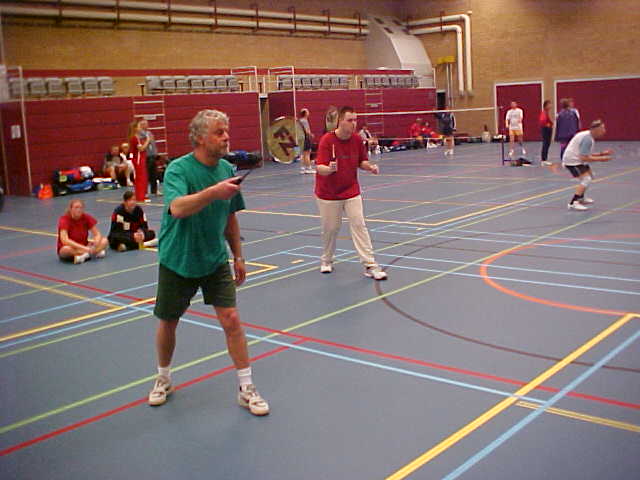
Organization
The Badminton World Federation (BWF) is the internationally recognized governing body of the sport responsible for conduction of tournaments and approaching fair play. Five regional confederations are associated with the BWF:
- Asia: Badminton Asia Confederation (BAC)
- Africa: Badminton Confederation of Africa (BCA)
- Americas: Badminton Pan Am (North America and South America belong to the same confederation; BPA)
- Europe: Badminton Europe (BE)
- Oceania: Badminton Oceania (BO)






